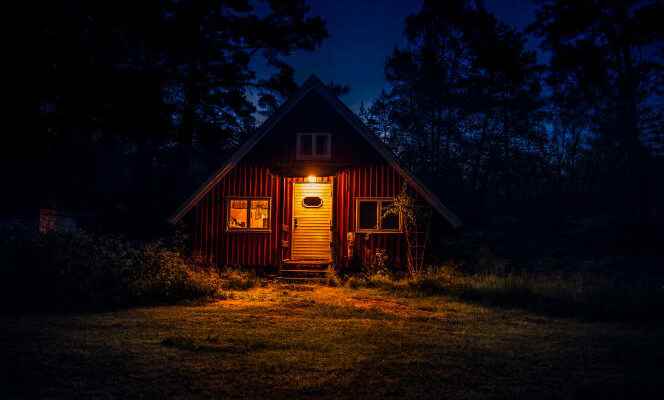LETTER FROM MALMÖ
Since the arrival of autumn, the alleys of residential areas in southern Sweden seem particularly dark. Every day, the sun sets earlier: around 6:15 p.m. on October 12 in Malmö. At the end of the month, night will fall at 4.30 p.m. But, while Swedes usually fight darkness by turning on lights in almost all the rooms of the house, decorating gardens and balconies with light garlands, this year many seem to have given it up.
In any case, this is the impression that a walk in the streets gives after dark. Those who have visited the country, as well as fans of Swedish television series, will be able to testify to this: at dusk, the windows, rarely equipped with shutters, offer a breathtaking view of the cozy interiors, which seem straight out of an Ikea catalog.
As autumn approaches, decorating magazines are full of advice on how to achieve an atmosphere as mysigt as possible – a term that echoes “hygge” Danish, defined by the Larousse as a “feeling of well-being and serenity characteristic of the Danish art of living, based on the authentic pleasures of everyday life, the moments shared with loved ones, the cozy comfort of one’s interior”.
An essential element of this Scandinavian way of life: lighting. The candles of course, but also the lamps, placed with care, in each corner of the rooms, to obtain a cozy lighting: the mysbelysning. Some lights stay on night and day, even when no one is around, or everyone is sleeping. “It’s still a lot more mysigt to return to a lighted house, when it is dark and cold outside in winter”, confided a Swedish friend. Suffice to say that little Swedes are rarely encouraged to turn off behind them.
A rising electricity bill
This practice can be explained by the traditionally low prices of electricity, in a country where hydropower accounts for nearly half of production, while fossil fuels have been virtually eradicated, including for heating. Moreover, even if the plaid is one of the essential accessories of a winter decoration, the interior temperatures generally exceed 20°C in Swedish houses and apartments.
But, this year, it is expensive, especially when you live in the south of the country, in zone 4 – since 2011, the kingdom has been divided into four zones, with different prices: a measure adopted to encourage electricians to increase the production in the South, which was sorely lacking compared to the North. A waste of time: if capacities have grown in the North, with the construction of huge wind farms, they have fallen in the South, after the closure of several nuclear reactors. However, due to a lack of investment in the network, bottlenecks form at peak times, between the North and the South, and all that remains is to import electricity.
You have 49.41% of this article left to read. The following is for subscribers only.
